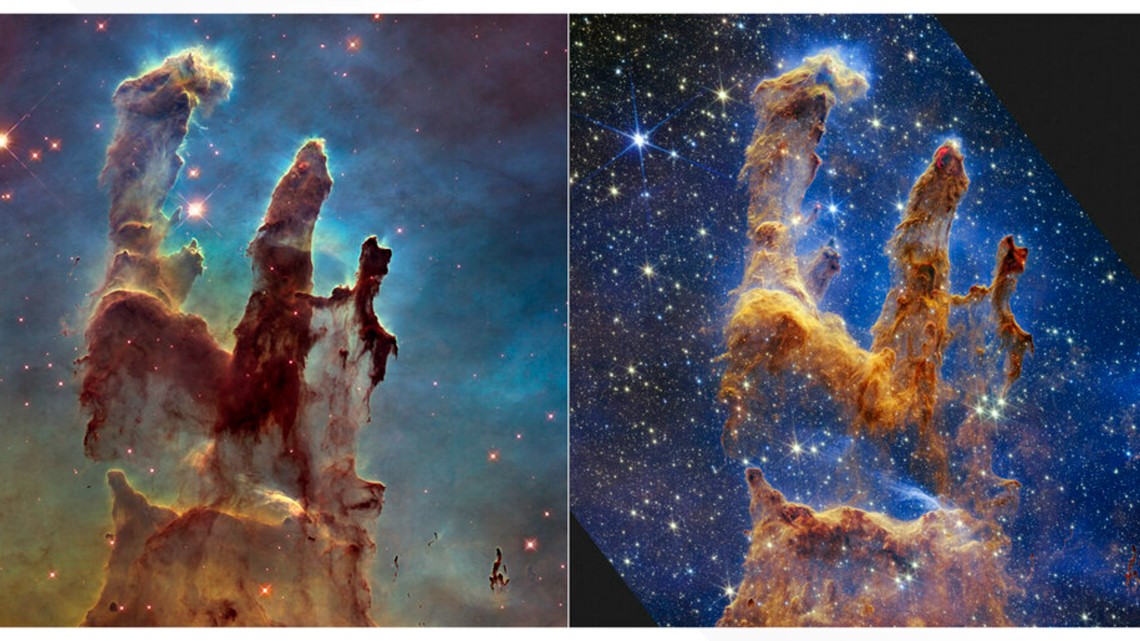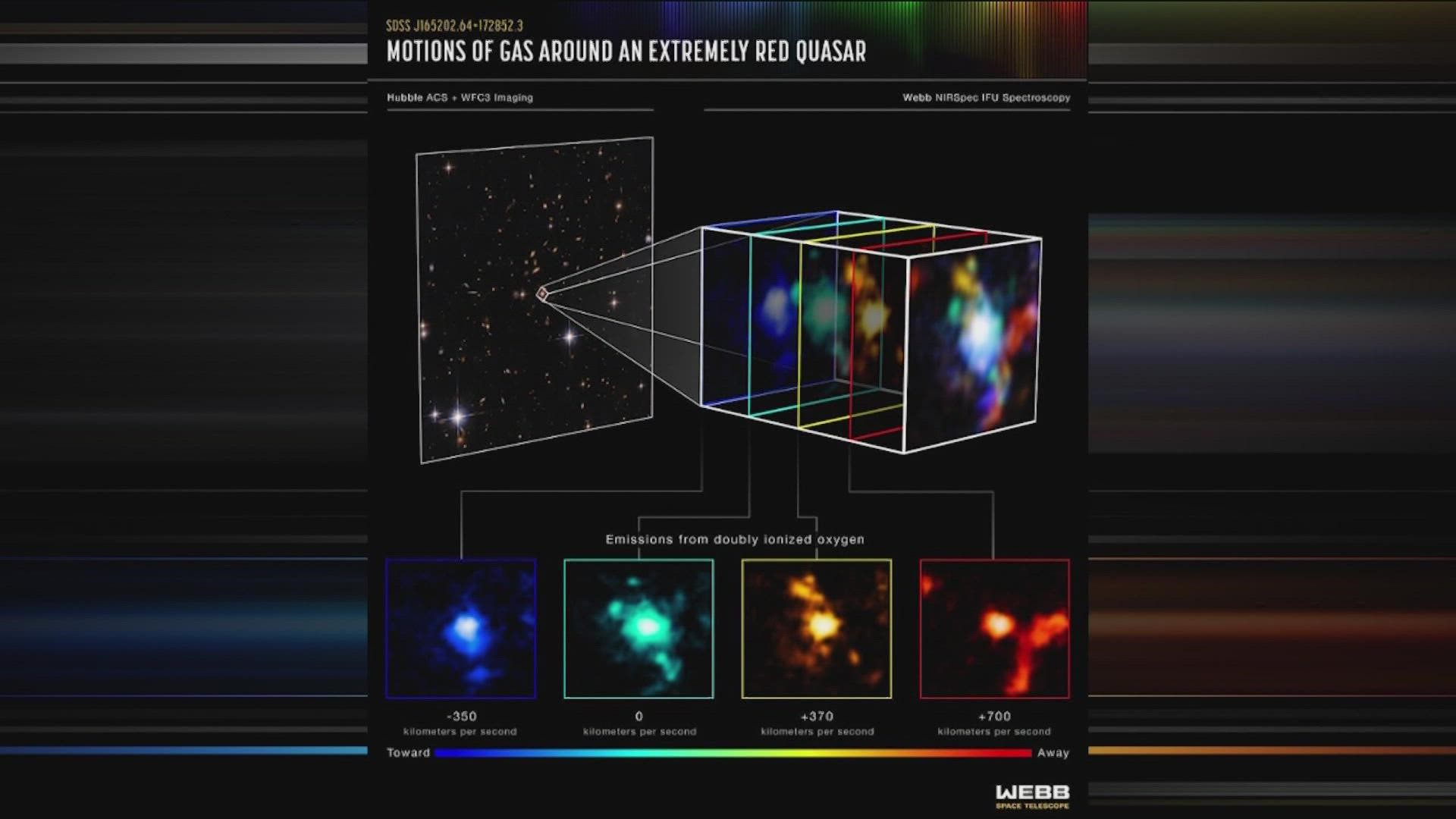WASHINGTON — NASA's James Webb Space Telescope made a surprising discovery as it peered into the ancient depths of the universe: a "cosmic knot" of massive galaxies forming around an extremely red quasar that existed billions of years ago.
A quasar forms as gas falls into a supermassive black hole at the center of a galaxy, making it shine brighter than all the galaxy's stars. The quasar and surrounding galaxies existed 11.5 billion years ago, according to NASA.
This quasar, called SDSS J165202.64+172852.3, is "unusually red" in color because the galaxy’s light has been redshifted. Because it is so far away and the light has taken so long to reach the Webb telescope, the light waves have stretched as the universe has expanded.
Because the Webb telescope captures the universe through near infrared light, the powerful telescope was able to capture the cluster in more detail and distinguish the separate galaxies.
Scientists said this quasar is one of the most powerful ever seen at such a great distance.


“There are few galaxy protoclusters known at this early time. It’s hard to find them, and very few have had time to form since the big bang,” said astronomer Dominika Wylezalek of Heidelberg University in Germany, who led the study with Webb. “This may eventually help us understand how galaxies in dense environments evolve. It’s an exciting result.”
Before the telescope imaging came in, scientists speculated the quasar's main galaxy could be merging with another unseen galaxy, because of previous studies showing the quasar's large energy output.
They were stunned when Webb confirmed there were at least three galaxies orbiting around each other at high speeds, according to NASA.
There could be even more. The researchers believe this is one of the densest known areas of galaxy formation in the early universe.
"Our first look at the data quickly revealed clear signs of major interactions between the neighboring galaxies,” said Andrey Vayner of Johns Hopkins University in Baltimore, Maryland.


NASA said more follow-up observations into the unexpected discovery are sure to come as scientists study how these dense, chaotic galaxy clusters formed in the ancient universe.
This is just the latest in a string of exciting discoveries from Webb. The powerful telescope revisited the famed Pillars of Creation first made famous by the Hubble Telescope in 1995, capturing the star-forming region in incredible new detail.



